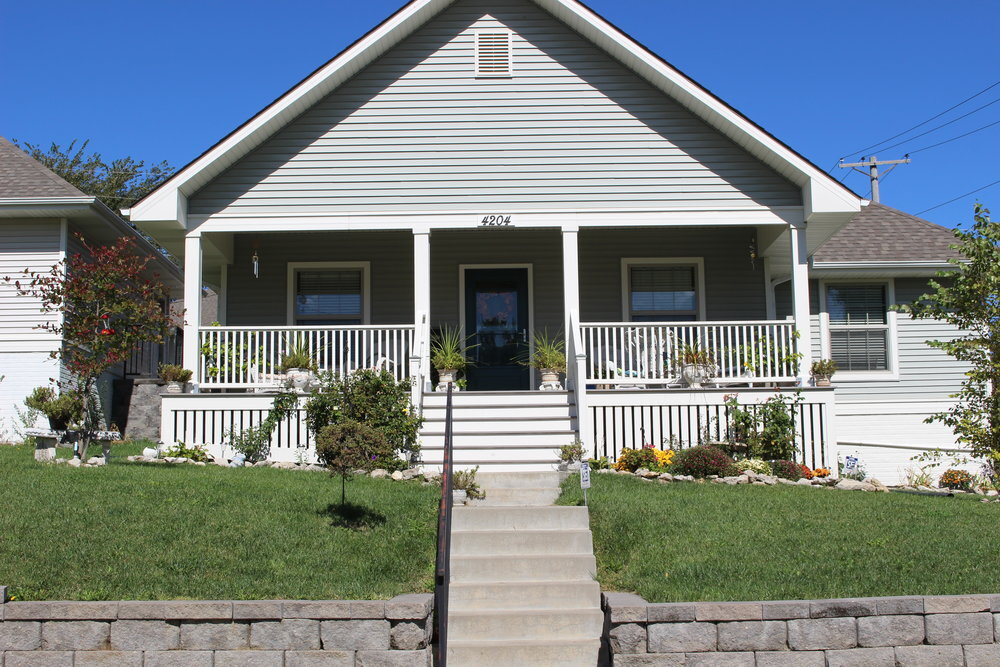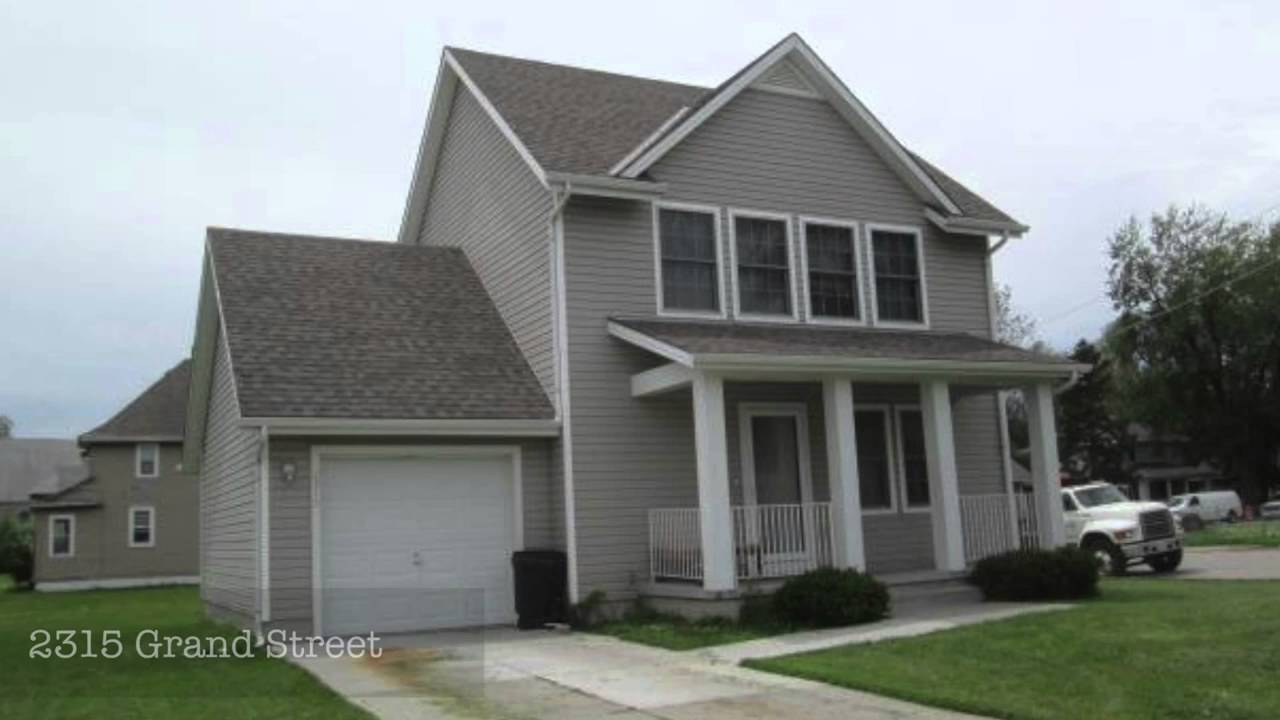Affordable Housing for Whom?
Blackstone Corner Apartments, recently completed, range from $840/month for a studio up to $1660 for a two-bedroom in the rapidly developing district along Farnam Street. Image: Alley Poyner Macchietto Architecture
There has been a growing number of conversations about housing in cities like Omaha that are seeing new luxury developments in their urban centers. As rents and buildings rise, people have become more concerned about affordable housing.
The term “affordable” is used quite regularly by developers, city officials, housing advocates, and residents, but what exactly is meant by affordable? Affordable to whom? By what measures? What does affordable housing look like and who is building it in Omaha?
Let’s start with the literal definition. Google “affordable” and you will see the terms “inexpensive; reasonably priced” and "affordable housing" as the contextual example! “Inexpensive”? “Reasonably priced”? Those are both subjective terms, depending on the income. That is where “affordable” really becomes tricky.
The Department of Housing and Urban Development (HUD) considers a place affordable if a household can pay 30 percent or less of its income on housing costs. Yet HUD notes:
“An estimated 12 million renter and homeowner households now pay more than 50 percent of their annual incomes for housing. A family with one full-time worker earning the minimum wage cannot afford the local fair-market rent for a two-bedroom apartment anywhere in the United States.”
A household is considered low-income if the annual wage falls below 80 percent of the Area Median Income (AMI). In the Omaha-Council Bluffs Metro, that’s $81,600. This means a family of four making $65,300 could qualify as “low-income” in some parts of the region. Meanwhile, the median household income for residents of North Omaha is approximately $41,793. A big issue with medians is that they fail to represent those who live at or below the poverty line, many of whom are noticeably concentrated in North and South Omaha.
Basing “affordability” solely on AMI ignores ongoing costs such as transportation, medical, and education, which factor into a family’s true ability to afford their housing. Yet two of the major affordable housing developers in Omaha, Holy Name Housing Corporation (HNHC) and Gesu Housing, use AMI as the sole criteria for deciding whether or not a family qualifies for one of their homes.
Holy Name Housing Corporation (HNHC) is a nonprofit that has been providing affordable housing in North Omaha since 1982. Their definition of affordability: “What a family can afford based on the size of the family and we go by HUD guidelines of affordability,” said Mike Gawley, executive director of HNHC.
In the early years, HNHC renovated an estimated 140 homes until expenses outgrew finances and the City of Omaha acquired funds for building new homes. “Whatever the family couldn’t afford in a mortgage, the city would give us the extra money for that house to build it and a second mortgage would be on that house,” Gawley explained. “As long as the family stayed in the house for 10 years, the second mortgage was forgiven.” That model is not used today. Now HNHC uses Low-Income Housing Tax Credits, LIHTC (pronounced Ly-tek), to fund 90 - 95 percent of their new home builds.
Holy Name provides housing in two different income brackets. One for families who make 80 percent of the AMI or less and one for families who make between 80 and 120 percent of the AMI. “We are also working on, in the future, building housing for people who make 30 percent AMI or less,” said Gawley. For a family of four to qualify for LIHTC housing, Gawley said they would have to earn a maximum income of $51,600. For a senior household of two, the maximum is $41,000. The organization also sets minimums to ensure the families can afford the mortgages.
LIHTC can be very complex but put simply, Congress approves money each year to be allocated by states. State housing agencies then award the credits to private developers of affordable rental housing projects through a competitive process. Organizations receiving the credits must meet certain parameters, including ensuring that a percentage of units constructed meet low-income guidelines.
How does one ensure these properties stay affordable? Gawley explained that HNHC records are audited regularly and their LIHTC properties are monitored for at least 15 years, sometimes up to 30 years. Fortunately, a family’s income only has to qualify the year they apply for a LIHTC property, meaning their income could increase as long as they stay in the home. Other funding sources, like the Nebraska Department of Economic Development’s Trust Funds, evaluate incomes annually, which could disqualify people if they begin to earn over the “low-income” limit.
Holy Name offers financial support services to families living in their properties, including budgeting and mortgages. Gawley mentioned Omaha 100, which works with a consortium of financial institutions to offer affordable mortgage lending products and Family Housing Advisory Services, located on 24th & Lake Streets, which provides low-interest loans and homeownership counseling.
Dale Barr, Gesu Housing CEO
As for Gesu Housing, CEO Dale Barr reiterated that affordable is defined by 80 percent or under AMI and the person qualifies for a $68,000 bank mortgage. This means applicants must have good work and credit history to receive that loan.
Barr said Gesu refers people to Omaha 100 before going through the application process. If they qualify, the City of Omaha backs a $60,000 loan to enable the applicant to buy a $128,000 home from Gesu while only paying their monthly bank loan, which averages $650.
Barr said each house costs $200,000 to build. He raises $70,000 per house from private foundations and other grants to cover building costs and maintain the lower sale price. Gesu is building 71 houses in the Holy Name/Clifton Hills area, 57 of which have been sold, and the remainder are under construction. Currently, there is a waiting list. Three homes to be completed in December already have qualified buyers.
“The homeowner puts in a third, HUD/the City put in a third, and Gesu puts in a third,” said Barr, “and that’s how we define affordable, keeping the monthly house payment and utilities at a level where they can afford it.”
Most of the homes resemble suburban, single-family homes. Holy Name Housing gets its recent designs from Alley Poyner Macchietto Architecture. Gesu works with Hall Marq Construction to devise layouts based on the neighborhood surrounding their new construction. Most models have three to four bedrooms, attached garage, and noteworthy Energy Star ratings to reduce energy costs.
Holy Name Housing, Gesu Housing, and Habitat for Humanity have been chosen to build new housing along North 30th Street in a major redevelopment of the Highlander neighborhood coordinated by 75 North Development Corporation. Partial funding comes from a $25 million HUD Choice Neighborhoods Implementation grant received by the City of Omaha earlier in 2019. $187 million in additional funds have been committed from banks, donors, and foundations. Meetings regarding the grant and other North Omaha development are coming up in January.





